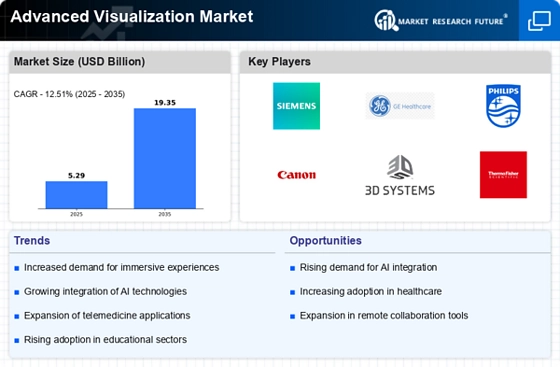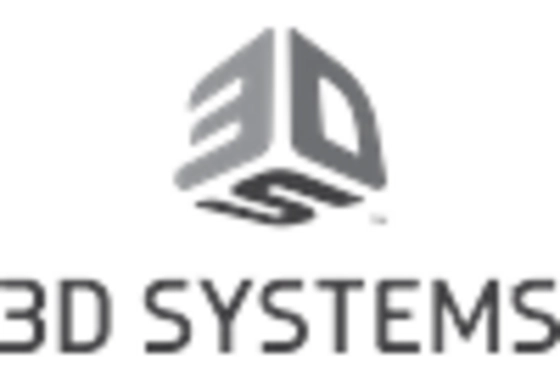The Advanced Visualization Market is currently characterized by a dynamic competitive landscape, driven by technological advancements and increasing demand for enhanced imaging solutions across various sectors, particularly healthcare. Key players such as Siemens (Germany), GE Healthcare (US), and Philips (Netherlands) are at the forefront, each adopting distinct strategies to solidify their market positions. Siemens (Germany) emphasizes innovation through its development of cutting-edge imaging technologies, while GE Healthcare (US) focuses on strategic partnerships to enhance its product offerings. Philips (Netherlands) is actively pursuing regional expansion, particularly in emerging markets, thereby diversifying its operational footprint and customer base. Collectively, these strategies contribute to a competitive environment that is both collaborative and competitive, as companies seek to leverage their strengths to capture market share.
In terms of business tactics, companies are increasingly localizing manufacturing and optimizing supply chains to enhance efficiency and responsiveness to market demands. The Advanced Visualization Market appears moderately fragmented, with several key players exerting significant influence. This structure allows for a variety of competitive strategies, as companies navigate the complexities of The Advanced Visualization dynamics.
In August 2025, Siemens (Germany) announced the launch of its latest imaging platform, which integrates artificial intelligence to enhance diagnostic accuracy. This strategic move not only underscores Siemens' commitment to innovation but also positions the company to meet the growing demand for advanced imaging solutions that leverage AI capabilities. The introduction of this platform is likely to strengthen Siemens' competitive edge in the market, as healthcare providers increasingly seek technologies that improve patient outcomes.
In September 2025, GE Healthcare (US) entered into a partnership with a leading telehealth provider to integrate advanced visualization tools into remote patient monitoring systems. This collaboration is strategically significant as it aligns with the ongoing trend towards digital health solutions, enabling GE Healthcare to expand its reach and enhance the value of its offerings. By integrating advanced visualization into telehealth, GE Healthcare is poised to address the evolving needs of healthcare providers and patients alike.
In July 2025, Philips (Netherlands) completed the acquisition of a startup specializing in 3D imaging technologies. This acquisition is indicative of Philips' strategy to bolster its portfolio with innovative solutions that cater to the growing demand for personalized medicine. By integrating 3D imaging capabilities, Philips enhances its competitive positioning, allowing it to offer more comprehensive solutions that meet the diverse needs of healthcare professionals.
As of October 2025, the Advanced Visualization Market is witnessing trends that emphasize digitalization, sustainability, and the integration of artificial intelligence. Strategic alliances are increasingly shaping the competitive landscape, as companies recognize the value of collaboration in driving innovation. Looking ahead, competitive differentiation is likely to evolve, shifting from traditional price-based competition to a focus on technological innovation, reliability in supply chains, and the ability to deliver superior patient outcomes. This transition suggests that companies that prioritize these aspects will be better positioned to thrive in the rapidly evolving market.

















Leave a Comment